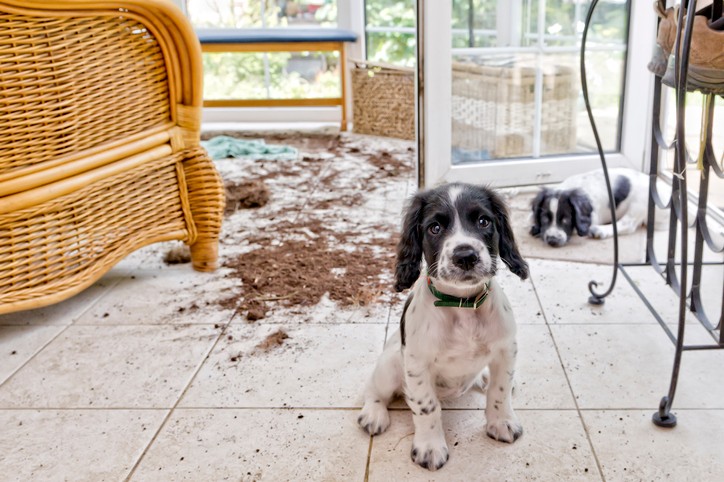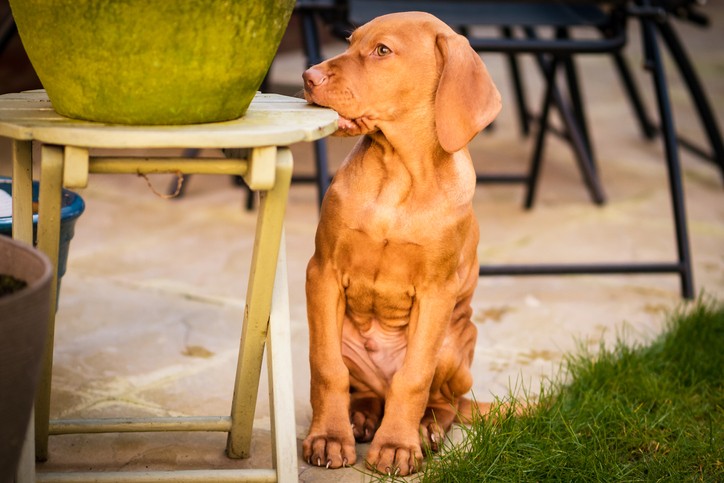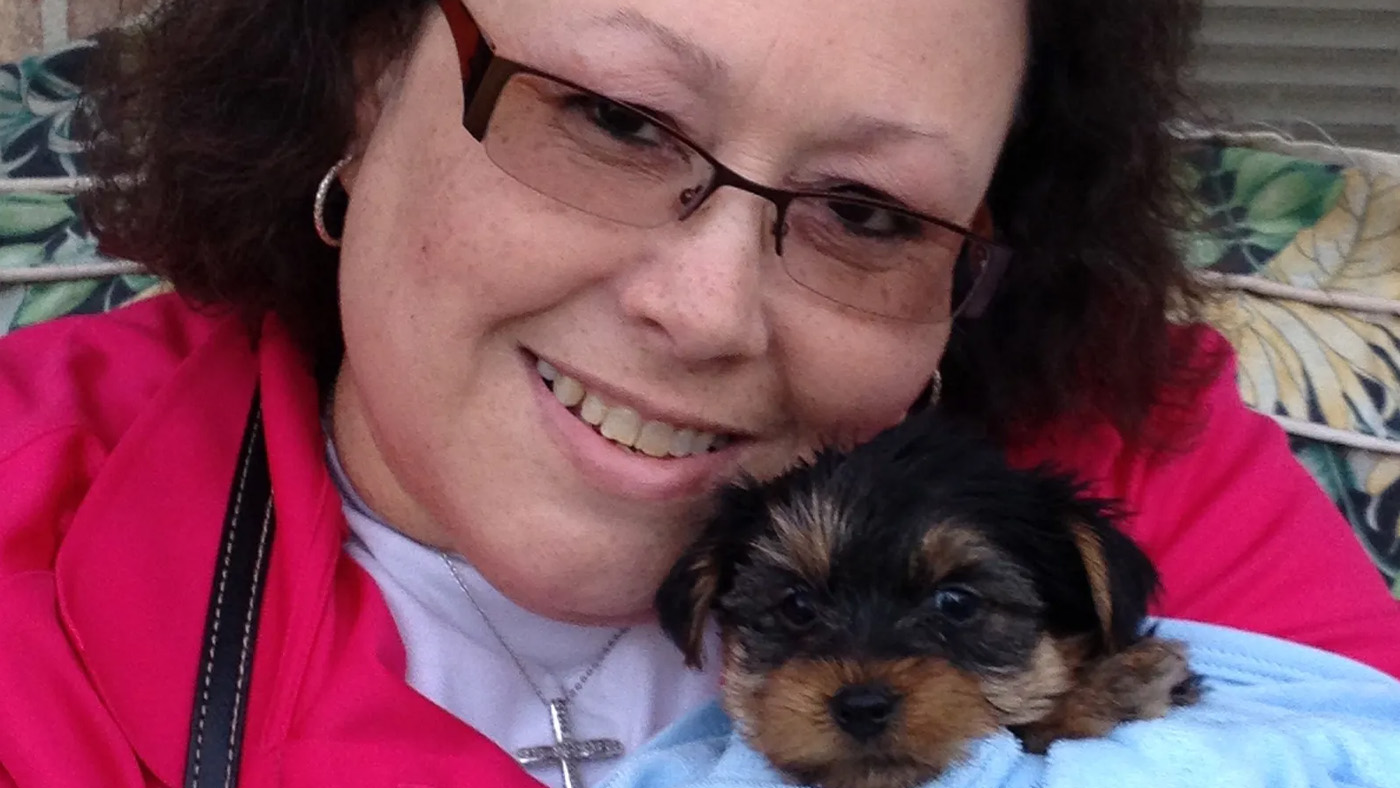Puppy behavior: Five tips from a vet for solving problems
Start your puppy off on the right paw with these five puppy behavior tips

Puppy training is one of the most important tasks you’ll take on as a new pet owner. New puppies are super fun, but they can also be a handful! If this is your first puppy, or it has been a while since your last one, you may not realize just how much work training a young dog can be.
Fortunately, most puppy behavioral problems can be solved if you address them early. However, it’s important to make sure you’re addressing behavior problems the right way.
Punishment-based training methods – like yelling, hitting, spraying with water, or 'alpha rolls' – are scary for your puppy, and may cause more behavioral problems in the future. Instead, check out these tips for using positive reinforcement training to address some of the most common puppy behavior concerns.
- Best puppy food: Make sure your new dog grows up strong and healthy
1. Whining and barking while in their crate
No one wants to be locked up away from their family! It will take some time for your puppy to get used to being in the crate, but you can help by teaching your puppy to view the crate as a safe and comfortable resting place.
Make sure you’re providing your puppy with a comfortable bed in the crate and using lots of positive reinforcement during training. Feeding your puppy in the crate or providing a special puzzle toy to keep her busy are great ways to encourage quiet behavior when crated.
The biggest mistake pet parents make is letting the puppy out of the crate when she is whining. Unfortunately, this only teaches the puppy that whining and barking will get her what she wants! Never let your puppy out of the crate or give her any attention when she is whining or barking while crated. Remember that even negative attention – like yelling or startling the puppy – is still attention, and may reinforce this nuisance behavior! Instead, ignore the puppy until she is calm and quiet. You can reward calm behavior by occasionally dropping some of the best puppy treats into the crate for her, which reinforces that the crate is a fun place to be!
2. Urinating and/or defecating in the crate
Accidents in the crate are another common problem that pet parents encounter during crate training and potty training. Often, this occurs because the crate is too large for your puppy. While it may be tempting to purchase a larger crate to fit your puppy’s expected adult size, a crate that is too large will allow your puppy to urinate and defecate in one area and sleep in another, which may encourage soiling.
A properly sized crate should be just big enough for your puppy to stand up to her full height and turn around in a circle. If your current crate is too large, purchase a smaller one until your puppy reaches her adult size or use a solid barrier such as pieces of cardboard to help section off part of it while your puppy grows into it.

3. Inappropriate or destructive chewing behavior
Puppies will start teething as their adult teeth begin to erupt, much in the same way that human children do. Just as human children need teething rings and other toys to help relieve the discomfort associated with these new teeth, puppies will also look for things to chew to ease their pain – and this often includes your furniture!
Puppies also naturally like to explore the world through their mouths, which may be a contributory factor to this destructive behavior. Some puppies will outgrow inappropriate chewing behavior, but it’s still best to curb this behavior as quickly as possible.
Make sure you provide your puppy with plenty of the best dog chew toys of varying shapes, sizes, and textures. When your puppy tries to chew the furniture, redirect her onto a more appropriate object, and reward her with plenty of praise and treats to encourage her to continue chewing the right toys.
You can also use deterrents such as bitter apple spray or even hot sauce applied to the inappropriate surfaces she likes to chew, such as your furniture – just be careful not to apply them to upholstery, which may stain, and never spray them on your dog or around her face.
4. Jumping up on people
Does your puppy get so excited at meeting new people that she just can’t control herself? You can help curb this behavior by teaching her to keep 'four on the floor' when greeting new people. To start, you’ll need to get your friends and family on board with this training – consistency is the key to making any training plan a success! You’ll need to make sure your friends and family don’t inadvertently encourage the behavior by petting or talking to your puppy while she is jumping on them. Even pushing your puppy away may be seen as part of the game and may encourage her to continue jumping. Instead, they should calmly turn and walk away when she jumps so that she will learn she cannot get anyone’s attention this way.
When a new person is approaching, ask your puppy to sit and stay. You may need to start at quite a distance at first if your puppy is too excited to listen. Once she is sitting and calm, reward her with a treat, and allow the person to calmly approach and say hello. If the interaction is going well and your puppy is staying calm, they can even offer her a few treats as a reward for this good behavior. If your puppy tries to jump, simply turn and lead and lead her away – she has lost her opportunity to greet that person today! With patience and repetition she will soon learn that she needs to sit politely and keep 'four on the floor' if she wants to say hello.
5. Nipping and inappropriate play behavior
Pet owners often worry that their dog is becoming aggressive when they start biting at a young age. But in a young puppy, this is often inappropriate play behavior. Puppies frequently nip at moving hands or legs in an effort to initiate play. To stop this behavior, it’s important to avoid sending mixed signals. Never play with your puppy using your hands or body – including wrestling or rough housing – as this can teach them to use you as a chew toy! Instead, try to redirect them onto a more appropriate toy. If they continue trying to nip, put your hands behind your back until they settle down or get up and walk away. With patience and consistency, they'll learn that play time stops if they get too rough. Never hit your puppy, grab them by the muzzle, or use other punishments, as these responses may cause fear and worsen aggression in the future.
Patience, consistency, and positive reinforcement
Whether you’re addressing an unwanted behavior or teaching a new trick, being clear and consistent with your training is the key. Always use positive reinforcement by rewarding desirable behaviors with a good experience, such as praise, petting, or a tasty treat. Using this method consistently will teach your puppy that good behavior is far more fun and rewarding than causing trouble.
PetsRadar Newsletter
Get the best advice, tips and top tech for your beloved Pets
Dr. Elizabeth Racine is a small animal general practice vet covering all things pet health and wellness. Her special interests include veterinary behavior, nutrition, and internal medicine.
As a freelance writer, Dr. Racine has written content for major companies in the industry such as the American Kennel Club, Merck Animal Health, Bayer PetBasics, Elanco, and CareCredit. In her free time, Dr. Racine enjoys playing trampoline dodgeball, hiking with her beagle Dasher, and spending time with her three mischievous cats.

